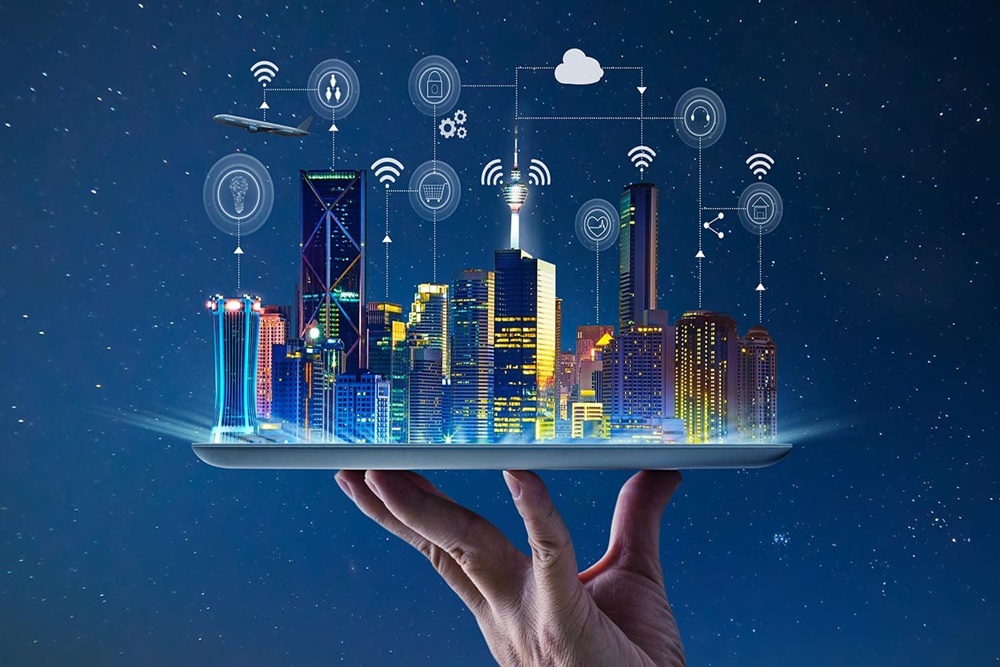
By Dr. Jaijit Bhattacharya
The primary function of cities is to facilitate secondary and tertiary economic activities – Those that do not involve agriculture or mining or animal husbandry but involve processing what comes out of mining and agriculture such as factories and providing support to manufacturing such as financial services. Hence Secondary and Tertiary economic activities are people driven economic activities and therefore, to facilitate secondary and tertiary economic activities, it becomes important for cities to be people-friendly and to provide a platform for being more efficient and economically competitive.
In our quest to improve our cities, we have stumbled upon the concept of Smart Cities. Smart cities, or their new avatar, Smarter Cities, are touted as a panacea for all ills of a city. However, all that Smart cities are focussed on, are inserting some IT and some sensors for primary safety, security and energy efficiency of the city. It also includes inserting IT and sensors into some other aspects of the city such as transportation, water management etc. Is this enough for an Indian city? How does an Indian city manage the distribution of energy in the city Because of various regulatory issues and because of lack of skilled manpower, we have increasingly seen buildings and flyovers collapsing in Indian cities. How would merely being a smart city help in tracking which flyover or building is on the verge of collapse? Or ensuring that the police station can receive the rapid response signal and respond to it? What should be the procedural changes in the police station? How will a city manage massive urban migration? How will cities manage a large worker population? How will a smart city ensure that a working mother is provided with safe crèche facilities with appropriate regulatory frameworks that would enable her to fully unlock her economic potential?
To answer some of these questions, we need to build Next Generation Cities in India. Next-Generation Cities are economic activity-friendly, people-friendly and super-efficient urban population entities that provide a considerable competitive advantage to businesses operating out of these cities. Next-Generation Cities help in the more rapid economic development of the nation and hence networking the Next Generation Cities has a far greater multiplier effect on the growth rate of the country.
Next-Generation Cities are an outcome of new Operational models, new Financial models and new Technological models that are fast evolving. We have seen the first steps towards Next-Generation Cities already been taken in the form of Smart Cities or Intelligent cities. However, technology is only one aspect of Next Generation Cities. Moreover, when technology is infused into governance, it rips apart the governance processes that have evolved and stabilized over thousands of years. It becomes important to analyze the impact of such a change and to bring in the supporting regulatory frameworks and their implementation mechanisms to ensure that there is no large scale negative fallout of such technology absorption in cities.
The challenges that today’s cities need to gear up to face cannot be addressed by technological infusion alone. Issues such as Massive Urban Migration (MUM) require infrastructure creation on an unprecedented scale for a transient phenomenon. Such infrastructure includes city social infrastructure such as migrant worker hostels, women’s hostels, infrastructure for the elderly, crèches and their accompanying regulatory framework and governmental institution formulations. Such infrastructure will allow greater unlocking of the economic potential of key segments of the population such as migrant workers, women and young workers who have dependent elders.
The expected MUM will be of a scale that has not been witnessed ever in the history of humankind and in the absence of the city’s upgrading to become Next Generation Cities, will lead to a significant curtailment of economic growth and considerable human misery. Unlike other cities that have developed based on either foreign labour or based on a principle of discriminatory access to cities, did not have to face the issue of the workers, who build the city, also settling down in the same city. However, Indian cities will have to face this challenge as they get re-built.
Also, given the diversity of MUM that will happen, it is necessary to gear up the city for issues such as religious infrastructure, disaster management, energy consumption monitoring and other issues related to the large scale infusion of a diverse population. Again, in the absence of preparedness, one can expect social problems leading to loss of economic productivity.
Therefore, to support the smooth functioning of a Next-Generation City, it is essential to have Urban Analytics that will help in all the above city management issues and help provide personalized governance to the city’s businesses and people.
It is also essential to leverage innovative Financial Models for the capital costs for funding the Next Generation cities, using financial tools that are developed specifically to support the building of such cities.
Such rapid changes would require significant resources for running the city and hence a different set of innovative financial models are required to be adopted, including non-tax revenue generation through a Service Oriented Administration (SOA), moving away from the traditional Tax Oriented Administration (TOA).
Next-Generation Cities is a challenging step forward in the evolution of human societies and it is strongly believed that such an evolution can be achieved at the least cost, monetary and human, only through deep partnerships with the involvement of all stakeholders of a city.
This article first appeared in Outlook India, https://www.outlookindia.com/website/story/opinion-indian-cities-is-being-smart-good-enough/377926